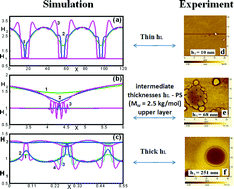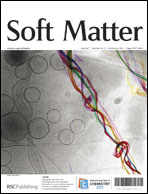Switching of interfacial instabilities from the liquid/air interface to the liquid/liquid interface in a polymer bilayer
Abstract
A combined experimental and theoretical study uncovers the interfacial morphologies of a thin bilayer composed of a polystyrene (


 Please wait while we load your content...
Please wait while we load your content...